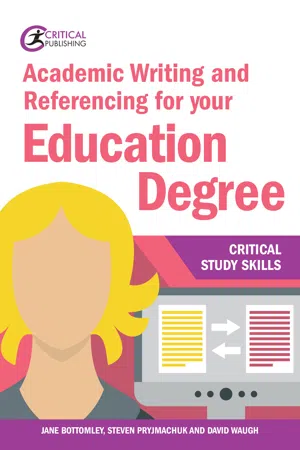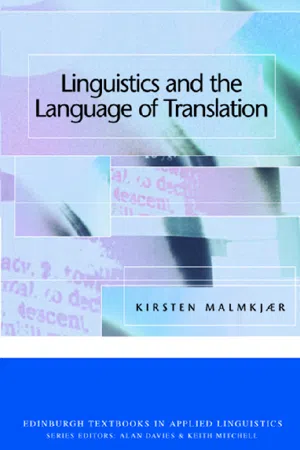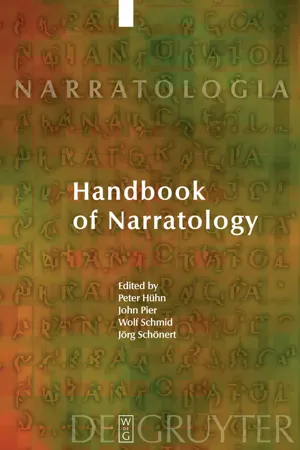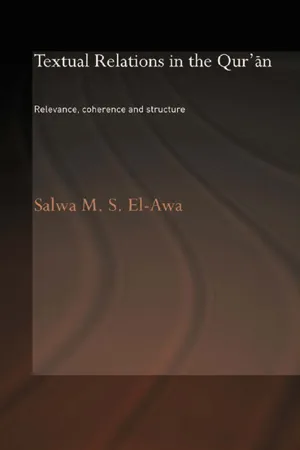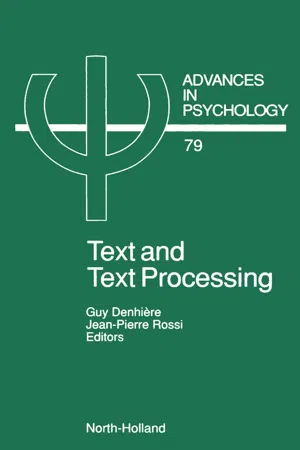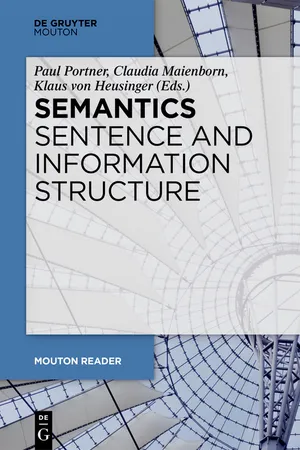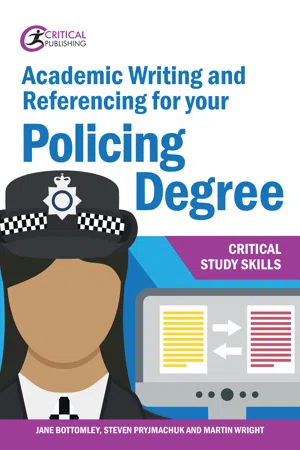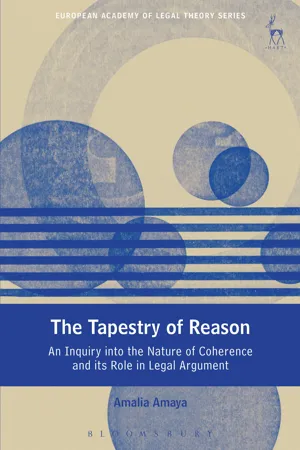Languages & Linguistics
Coherence within Paragraphs
Coherence within paragraphs refers to the logical and smooth flow of ideas and information within a single paragraph. It involves using transitional words and phrases, maintaining a clear topic sentence, and ensuring that each sentence supports the main idea. Coherence helps readers understand the connections between sentences and ideas, making the paragraph more effective and easier to comprehend.
Written by Perlego with AI-assistance
Related key terms
1 of 5
12 Key excerpts on "Coherence within Paragraphs"
- eBook - PDF
Understanding Development and Proficiency in Writing
Quantitative Corpus Linguistic Approaches
- Philip Durrant, Mark Brenchley, Lee McCallum(Authors)
- 2021(Publication Date)
- Cambridge University Press(Publisher)
6 Development in Cohesion 6.1 Introduction The linguistic category of cohesion refers to those relations of meaning between elements of a text which provide a sense of connectedness, and which serve to distinguish a unified text from a random collection of utterances (Halliday & Hasan, 1976; Sanders & Pander Maat, 2006). As relations of meaning, cohesive links transcend grammatical structure and the types of linking relations described in Chapter 3, enabling connections to be established beyond the boundaries of the clause (Halliday & Matthiessen, 2014; Martin, 2003). Many researchers (as described in this chapter) have hypothesised that use of cohesion may be related to language development. The hypothesis is a superficially plausible one: effectively signalling how parts of a text are related can reasonably be seen as part of what a writer needs to achieve to compose an effective piece of writing. Indeed, it is common for writing test rubrics to include cohesion as part of what is graded in examinations (e.g. IELTS, 2018b). As we will see, however, there are also serious problems with this hypothesis and the overall message from the literature to date is that a clear relationship between cohesion and written language development has not been identified. However, the reasons why this relationship does not hold up in a consistent way are instructive for our broader understanding of quantitative research of development and so are worth reflecting on. We will return to this point in Section 6.4. Cohesion is often discussed together with the related construct of coherence. Coherence refers to readers’ subjective experience of a text as connected (Tanskanen, 2006). The nature of the relationship between cohesion and coherence has been a subject of extensive debate. While coherence is a mental construct, cohesion is usually taken to refer to linguistic features in a text – overt signals that help readers reconstruct a coherent message (McNamara et al., 2014). - No longer available |Learn more
- Jane Bottomley, Steven Pryjmachuk, David Waugh(Authors)
- 2018(Publication Date)
- Critical Publishing(Publisher)
Thus, it is clear that effective communication is something which should be prioritised at all levels of teaching. Cohesion and paragraph structure A text is made up of paragraphs. For a text to be clear and coherent, each paragraph must have a clear focus and structure. Good paragraphs usually have the following structural characteristics: • they deal with a single unified point and do not digress from this; CROSS REFERENCE Developing a coherent argument and expressing criticality CROSS REFERENCE Linking ideas CROSS REFERENCE Appendix 3 , Key phrases in assignments Chapter 2 Coherent texts and arguments 39 39 • they often introduce this point in the first sentence; • they usually move from general to specific information and ideas; • they order and connect ideas in a logical manner. In order for a paragraph to develop clearly, the points or ideas it contains should be linked in meaningful ways. This meaningful linking is known as ‘cohesion’ (Halliday and Hassan, 1976), and it is achieved through organisation, grammar and word choice, aspects of which will be discussed in this section. (Note that the extracts in the following task will be referred to throughout this chapter.) Task Cohesion and paragraph structure Read the paragraphs below. 1) Do you find them easy to read? 2) The paragraphs demonstrate some of the typical features of paragraph development and cohesion in English. Can you identify any aspects of organisation, grammar or word choice which make your life easier as a reader? Extract A: an extract from a typical student essay One important element of communication in teaching is active listening , whereby teachers fully concentrate on and reflect on what pupils say (Allott and Waugh, 2016). According to Smith (2005), active listening is an effective way of signalling empathy, as it conveys to pupils that they have the full attention of the person they are talking to. - eBook - PDF
- Kirsten Malmkjaer(Author)
- 2005(Publication Date)
- Edinburgh University Press(Publisher)
7.2.iii Coherence We noted above that it is often possible for readers and listeners to understand the logical relationships that hold between text parts even when these are not signalled by junctive expressions. In inferring such unsignalled relationships, readers rely on their background knowledge of the world as well as of discourse conventions to establish what is generally known as coherence. Interest in the notion of coherence grew in the early 1980s, when British linguistics began to take what may be called a cognitive turn away from what had until then been a primary interest in texts as physical entities more or less straightforwardly available for empirical analysis aimed at laying bare their structure, towards a primary interest in how mental representations arise and develop in the comprehending mind as a result of processing which involves interactive exploitation of the information derived from text and information already available to the com-prehending mind. Some linguists with these cognitively oriented interests pointed to a number of shortcomings of Halliday’s and Hasan’s view of texture. For example, Brown and Yule (1983) consider that the notion of cohesion developed by Halliday and Hasan is neither necessary nor sufficient to explain texture. They provide the following examples (Brown and Yule 1983: 196): A: There’s the doorbell. B: I’m in the bath Just to test the water, I made one telephone call yesterday to a leading British publisher with offices in New York. There was immediate interest in Clear Speech . (Letter from a literary agent) Both of these texts lack cohesive devices between the sentences that constitute them; yet they make sense as texts. In contrast, the following example (from Brown and Yule 1983: 197, drawing on Enkvist 1978: 110) is full of what might be thought to function as cohesive devices; yet it does not make sense as a text: I bought a Ford. A car in which President Wilson rode down the Champs Elysées was black. - eBook - PDF
- Peter Hühn, John Pier, Wolf Schmid, Jörg Schönert, Peter Hühn, John Pier, Wolf Schmid, Jörg Schönert(Authors)
- 2009(Publication Date)
- De Gruyter(Publisher)
Coherence Michael Toolan 1 Definition As a technical term, as distinct from its use in cultural activities to de-note a range of qualities deemed desirable (e.g. clarity, orderliness, reasonableness, logicality, “making sense,” and even persuasiveness), coherence has tended to be regarded as a textlinguistic (TL) notion. From its everyday senses, textlinguistic coherence has inherited some defining criteria, in particular the assumption that it denotes those qual-ities in the structure and design of a text that prompt language users to judge that “everything fits,” that the identified textual parts all contrib-ute to a whole, which is communicationally effective. But there has al-ways been a tension in the linguistic analysis of coherence, rooted in the recognition that TL “rules” for textual coherence (e.g. rules of an-aphora, norms of paragraphing and paragraph structure) are inevitably general and therefore insensitive to the unique contextual pressures of the particular text, on the one hand, while on the other, judgments of coherence are very much based on what addressees assess as relevant and informative in the unique discoursal circumstances of the individu-al text. This tension is often summarized as a distinction between (purely linguistic) cohesion and (contextualized) coherence: the former is neither necessary nor sufficient for the latter, even if it is normally a main contributory feature (de Beaugrande & Dressler 1981; Giora 1985). In broad terms, it is now widely recognized that coherence is ulti-mately a pragmatically-determined quality, requiring close atten-tion to the specific sense made of the text in the cultural context. This might suggest that determining coherence is a simple matter of apply-ing common sense in context; but narratives often go beyond common sense, that transcending being crucial to their importance and tellabili-ty, so that narratological studies of coherence suggest common sense is not a sufficient guide. - eBook - ePub
Textual Relations in the Qur'an
Relevance, Coherence and Structure
- Salwa M. El-Awa(Author)
- 2006(Publication Date)
- Routledge(Publisher)
Coherence relations in the Qur’ān are very ambiguous and have been in question by interpreters from various backgrounds for quite a long time in the history of Qur’anic studies. However, they are not what determines the meaning, nor do they make parts of the discourse related. Cohesive ties do connect parts of the text grammatically, but grammatical connectives have a very limited role in forming the meaning conveyed. In fact it is relevance relations that contribute to one’s choice of the interpretation one assigns to relations between utterances. In the following outline of some notions that are central to the two approaches, I will show why this is so.Coherence relationsFor Halliday and Hassan, whose book Cohesion in English is a landmark in the field, ‘The concept of cohesion counts for the essential semantic relations whereby any passage of speech or writing is enabled to function as a text’.2That is, for them, the physical expression of the relation between linguistic items is what the analyst is looking for in order to establish textuality as well as the meaning of the text. They take the existence of cohesive ties as a criterion for distinguishing text from non-text. However, the notion of coherence in their work is quite vague and uncertain, and most of their book is devoted to classifying different types of cohesive ties and explaining how they connect segments of discourse together. According to them, categories of cohesion relations are: references to elements inside and outside the text; ellipsis; substitution; conjunction and lexical cohesion (including repetitions). All these categories focus on the existence of linguistic items such as pronouns, substitutes, conjunctions and connectives. It is claimed that without the existence of some of these elements in the text the intended meaning can never be recovered. This account of cohesion succeeds in describing syntactically the role played by cohesive ties in forming the unity of text as a large grammatical unit consisting of physically or grammatically ‘connected sentences’. - eBook - PDF
- G. Denhiere, J.P. Rossi(Authors)
- 1991(Publication Date)
- North Holland(Publisher)
COHERENCE: PERSPECTIVES IN LINGUISTIC AND COGNITIVE RESEARCH This Page Intentionally Left Blank TEXT AND TEXT PROCESSING G. Denhitre and J.-P. Rossi (Editors) 0 Elsevier Science Publishers B.V. (North-Holland), 1991 251 ASPECTS OF TEXTUAL CONTINUITY LINGUISTIC APPROACHES Michel CHAROLLES and Marie-France EHRLICH UFR des Sciences du Langage Lab. de Psycho. Experimentale Univ. de Nancy I1 Univ. Paris V, EPHE, EHESS, 23 Bld Albert ler CNRS UA 316 - 2 8 rue Serpente 54015 NANCY 75006 PARIS Among the operations involved in discourse comprehension, the most fundamental are those which allow the subject to recognize or construct how text contents are ordered and form a whole, because it is these that are the essence of textuality itself. This is clear in that what differentiates a text from a random sequence of sentences (a non-text) is precisely its continuity and homogeneity. The issues of text coherence are thus central both for the linguist, whose interest lies in the description of discourse structure and its governing principles, and for the psycholinguist, whose goal is to gain a better understanding of how subjects produce and understand texts. Beyond the simple observation that both linguists and psychologists have studied text coherence, it is extremely difficult to single out what constitutes a shared empirical base, or how one field has borrowed from the other. This is not surprizing in that objects and methodologies in linguistics and psychology are not identical. Furthermore, theoretical frameworks, often divergent within a given field, are even more so when two scientific fields are involved. In order to define common ground and to pave the way for future collaboration, it seems useful as a first step to chart the changes that have taken place as each of these fields has explored issues in textually. Therefore, we have decided to present a two-part survey devoted to research in linguistics (in this section) and research in psychology (in the next section). - Paul Portner, Claudia Maienborn, Klaus von Heusinger, Paul Portner, Claudia Maienborn, Klaus von Heusinger(Authors)
- 2019(Publication Date)
- De Gruyter Mouton(Publisher)
1 Introduction To begin their landmark volume Cohesion in English , Halliday & Hasan (1976) make the central observation that is the focus of this paper as well: Andrew Kehler, San Diego, CA, USA 13 Cohesion and coherence 451 If a speaker of English hears or reads a passage of the language which is more than one sentence in length, he can normally decide without difficulty whether it forms a unified whole or is just a collection of unrelated sentences. (Halliday & Hasan 1976: 1) The goal of their book is to describe what makes the difference between the two. Their answer – as suggested by their book’s title – is that discourses exhibit cohesion. Cohesion is created by the existence of cohesively related items called ties. These ‘ties’ are pairs of items that participate in various types of depend-ency relations, such as an anaphoric pronoun and its antecedent expression, an instance of ellipsis and the expression that licenses it, pairs of identical content words (giving rise to lexical repetition), connectives (e.g., but , so , then ) and the clauses or sentences they relate, and even the intonational properties of an utter-ance (e.g., anaphoric deaccenting) and the expression that licenses those prop-erties. These examples all involve situations in which the interpretation of an element in the discourse is dependent on that of another. These are precisely the situations in which cohesion is said to occur, giving rise to the defining property of texture that Halliday and Hasan claim distinguishes texts from non-texts. Three years later, however, Hobbs (1979) began his classic paper Coherence and Coreference with a rejection of the cohesion hypothesis: Successive utterances in coherent discourse refer to the same entities. The common expla-nation for this is that the discourse is coherent because successive utterances are “about” the same entities. But this does not seem to stand up. The text (1) John took a train from Paris to Istanbul.- No longer available |Learn more
- Jane Bottomley, Steven Pryjmachuk, Patricia Cartney(Authors)
- 2018(Publication Date)
- Critical Publishing(Publisher)
It is therefore important that communication skills are developed and assessed as part of social work education. However, social workers do not function in isolation. As discussion of a number of reported social work ‘failures’ in this essay has shown, a breakdown in communication between social workers and other professionals, eg doctors, teachers and health visitors, can result in or contribute to poor practice. Thus, it is clear that effective communication is something which should be prioritised at all levels of practice and effective inter-professional communication should be encouraged and supported. Cohesion and paragraph structure A text is made up of paragraphs. For a text to be clear and coherent, each paragraph must have a clear focus and structure. Good paragraphs usually have the following structural characteristics: • they deal with a single unified point and do not digress from this; • they often introduce this point in the first sentence; • they usually move from general to specific information and ideas; • they order and connect ideas in a logical manner. In order for a paragraph to develop clearly, the points or ideas it contains should be linked in meaningful ways. This meaningful linking is known as ‘cohesion’ (Halliday and Hassan, 1976), and it is achieved through organisation, grammar and word choice, aspects of which will be discussed in this section. (Note that the extracts in the following task will be referred to throughout this chapter.) Task Cohesion and paragraph structure Read the paragraphs below. 1) Do you find them easy to read? 2) The paragraphs demonstrate some of the typical features of paragraph development and cohesion in English. Can you identify any aspects of organisation, grammar or word choice which make your life easier as a reader? - No longer available |Learn more
- Jane Bottomley, Steven Pryjmachuk(Authors)
- 2017(Publication Date)
- Critical Publishing(Publisher)
23 23 Chapter 2 Coherent texts and arguments Learning outcomes After reading this chapter you will: • have gained an understanding of the concept of coherence in writing; • understand the importance of effective planning; • understand how to write effective essay introductions and conclusions; • understand the importance of editing and redrafting your text; • understand how to develop paragraphs and texts which are easy to follow for the reader; • understand how to develop coherent arguments; • be aware of how your choices of grammar and expression can affect meaning, clarity and coherence. Reflection 1) What do you think it means to write ‘coherently’? How do you think this can be achieved? 2) What do you understand by ‘a coherent argument’? How is a coherent argument constructed? 3) How do you go about planning a piece of written work? How much time do you spend on this? 4) How do you go about editing a piece of written work? How much time do you spend on this? If a text is coherent , it makes sense to the reader . In this chapter, you will analyse a range of academic nursing texts to help you understand how coherence is achieved. Alongside this, you will develop effective planning, writing and editing strategies so that you are able to produce coherent texts and arguments of your own. Planning for coherence Planning is the process of selecting and organising information and ideas in order to respond to an assignment task effectively. The planning process should start with an examination of the wording of the task or question. This involves analysing, or ‘unpacking’, it so that you can be sure about what the lecturer assessing your work is expecting you to do. When you are sure you understand what you are being asked to do, you should start to draft a plan or ‘outline’. An outline is much more than a mere list of topics; there should be a clear organising principle , both for the text as a whole, and for individual sections of the text. - No longer available |Learn more
- Jane Bottomley, Steven Pryjmachuk, Martin Wright(Authors)
- 2020(Publication Date)
- Critical Publishing(Publisher)
It is therefore important that communication skills are developed and assessed as part of policing education and practice. However, police officers do not function in isolation. This essay has shown that good communication is also vital at a broader institutional level. Thus, it is clear that effective communication is something that should be prioritised at all levels of policing, including management. Cohesion and paragraph structure A text is made up of paragraphs. For a text to be clear and coherent, each paragraph must have a clear focus and structure. Good paragraphs usually have the following structural characteristics: • they deal with a single unified point and do not digress from this; • they often introduce this point in the first sentence; CROSS REFERENCE Developing a coherent argument and expressing criticality CROSS REFERENCE Appendix 3 , Key phrases in assignments Chapter 2 Coherent texts and arguments 39 39 • they usually move from general to specific information and ideas; • they order and connect ideas in a logical manner. In order for a paragraph to develop clearly, the points or ideas it contains should be linked in meaningful ways. This meaningful linking is known as ‘cohesion’ (Halliday and Hasan, 1976 ), and it is achieved through organisation, grammar and word choice, aspects of which will be discussed in this section. (Note that the extracts in the following task will be referred to throughout this chapter.) Task Cohesion and paragraph structure Read the paragraphs below. 1) Do you find them easy to read? 2) The paragraphs demonstrate some of the typical features of paragraph development and cohesion in English. - eBook - PDF
The Tapestry of Reason
An Inquiry into the Nature of Coherence and its Role in Legal Argument
- Amalia Amaya(Author)
- 2015(Publication Date)
- Hart Publishing(Publisher)
i. On Coherence, Cohesion and Other Notions As argued, most discourse theorists agree that cohesion does not amount to coherence, even if they disagree on the extent to which cohesion is neces-sary for coherence. Whereas some claim that a text may be coherent even if it is not cohesive, others contend that cohesion is a necessary feature of coherence (at least of ‘explicit coherence’). An interesting approach to this problem may be that of focusing on the relevance of cohesive marks of ‘incoherence’. From this point of view, marks of no-cohesion result in incoherence or at least impair text coherence. For instance, Enkvist gives the following example of syntactic evidence of non-coherence: (45) Susie went to London. Peter had known him for a long time. 103 103 Enkvist (1977: 115). 456 Discourse Coherence ‘Susie’ and ‘him’ disagree in gender. If we replace ‘him’ by ‘her’, the coher-ence of the text is restored. The relationship between coherence and other notions such as consistency or plausibility is also clarified if we consider how they bear on judgements of incoherence. Consider: (46) I have a blue-eyed wife. She has brown eyes. 104 (47) Q: Are there any interesting paintings here? A: The use of oblique angles, it keeps the walls from falling over us. 105 Lack of consistency (46) or plausibility (47) seriously impairs the coher-ence of a text. When explicit evidence of connectivity or non-connectivity is lacking, it is the interpreter who needs to interpret the message so as to make it coherent. Thus, texts which lack explicit coherence may be shown to be ‘implicitly coherent’, through the application of special procedures by the interpreter. The analysis of the relationship between coherence and other related notions in discourse theory brings to light two important features of coher-ence: (i) coherence is a gradual notion; 106 and (ii) there is a variety of sources of coherence. - eBook - PDF
- Deborah Tannen, Heidi E. Hamilton, Deborah Schiffrin(Authors)
- 2015(Publication Date)
- Wiley-Blackwell(Publisher)
4 Cohesion, Texture, and Coherence In this chapter I have outlined a modular perspective on text, which places cohe- sion analysis within a broader framework 24 for analyzing discourse. Following Martin (1992a), I described the ways in which cohesion can be recontextualized as discourse semantics (identification, negotiation, conjunction, ideation). Subsequently, the study of texture was briefly reviewed, drawing attention to work on patterns of interaction between discourse semantic, lexico-grammatical, and phonological systems (cohesive harmony, method of development, point, and modal responsibility). Finally, I approached coherence from the perspective of social context, suggesting that texture is motivated by tenor, field, and mode and the way in which genre phases these register variables together into a trajectory of meanings that naturalizes a reading position for readers and listeners. From an SFL perspective (for recent surveys see Halliday and Webster 2009; Hasan, Matthiessen, and Webster 2005, 2007), I expect that in the future our understandings of cohesion, texture, and coherence will be enhanced by further work on cohesion in rela- tion to other modules (both linguistic and social), 25 so that our sense of how the social motivates patterns of cohesion is improved (e.g., Bednarek and Martin 2010; Martin and Wodak 2003). I expect some of these patterns to emerge as recurrent units of discourse structure somewhere between what we currently understand as genre structure and clause structure. Early work on phase (e.g., Gregory 1995) and rhetorical units (Cloran 1995) has been encouraging in this respect; see also Martin and Rose (2008). Heeding Firth (e.g., 1957), however, it may be that a good deal of this kind of structure will turn out to be specific to particular registers and genres, and not something we will choose to generalize across social contexts. NOTES 1 For related European perspectives, see de Beaugrande and Dressler (1981).
Index pages curate the most relevant extracts from our library of academic textbooks. They’ve been created using an in-house natural language model (NLM), each adding context and meaning to key research topics.

